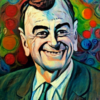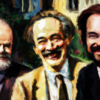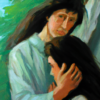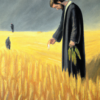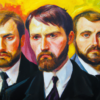And Martha brought up the boy. They christened him Paul and registered his patronymic as Fyodorovich as a matter of course, without asking anyone’s permission. Fyodor Karamazov did not object to this; in fact, he found it rather amusing. And later he called him Smerdyakov—the Reeking One—from his mother’s nickname—Lizaveta Smerdyashchaya, Reeking Lizaveta.
Brothers Karamazov by Fyodor Dostoyevsky
Fyodor Dostoevsky’s “The Brothers Karamazov” features a complex and multi-layered character named Smerdyakov. Meanwhile, what few seem to have noticed is that he is baptized to ‘Paul’ (‘Pavel’ in Russian), creating a strong link to the Bible. This deliberate choice of name provides insight into the deeper themes and messages that Dostoevsky wished to convey through this character, particularly in relation to the biblical figure of Paul.
The biblical figure of Paul, formerly known as Saul, underwent a profound conversion that transformed him from a fierce oppressor of Christians to one of their most ardent supporters. Through his letters, we see Paul grappling with the morality of his actions and the consequences of his beliefs, as well as the struggle to reconcile his faith with the reality of a world often at odds with his beliefs. This theme of conversion is mirrored in Smerdyakov’s character, who, like Paul, undergoes a transformation of his own.
However, while Paul’s conversion was a spiritual awakening that brought him closer to God and morality, Smerdyakov’s transformation is a descent into evil. In the novel, Smerdyakov adopts a nihilistic philosophy from Ivan, which leads him to reject the Christian gospel and commit a heinous act of violence. This contrast between Paul and Smerdyakov highlights the duality of human nature and the destructive potential of beliefs that reject morality and meaning in the world.
Furthermore, the naming of Smerdyakov as Paul underscores the importance of belief in shaping individual identity and the direction of one’s life. Through Paul’s conversion, he becomes a new person, filled with the grace and love of God, while Smerdyakov’s embrace of nihilism leads him down a path of evil and destruction. This comparison serves to emphasize the idea that beliefs have the power to shape our lives and actions, and challenges readers to consider the impact of their own beliefs on their lives.
In conclusion, the link between Paul and Smerdyakov in “The Brothers Karamazov” is a complex meditation on the nature of belief and the human capacity for both good and evil. The naming of Smerdyakov as Paul is a deliberate reference to the biblical figure of Paul, and a commentary on the themes of conversion, sin, and morality that are central to both the Bible and Dostoevsky’s work. Through the characters of Paul and Smerdyakov, we can see the impact of beliefs on our lives and the world around us, and be reminded of the importance of considering the impact of our beliefs on our own lives.

